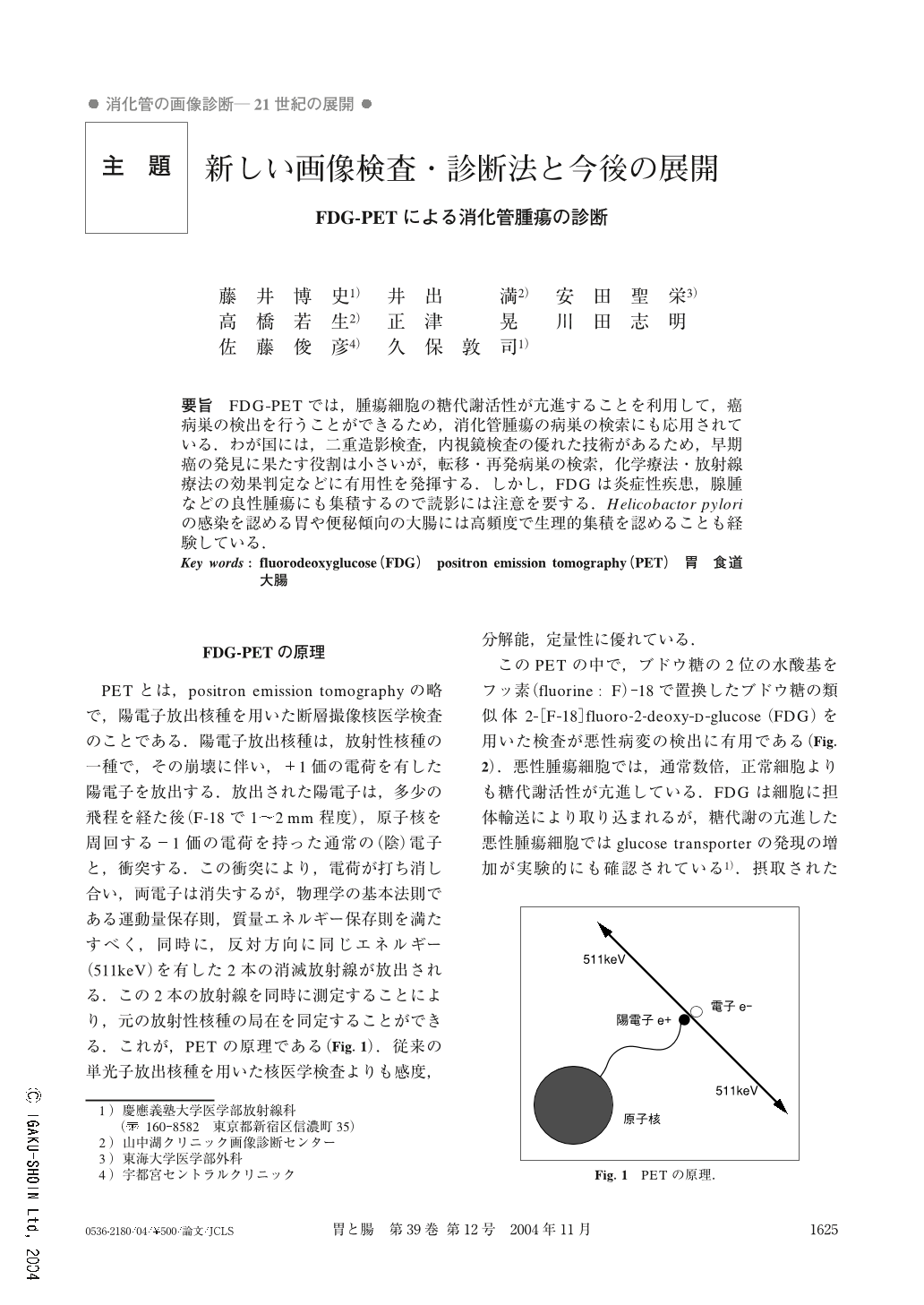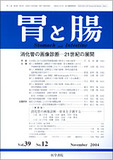Japanese
English
- 有料閲覧
- Abstract 文献概要
- 1ページ目 Look Inside
- 参考文献 Reference
- サイト内被引用 Cited by
要旨 FDG-PETでは,腫瘍細胞の糖代謝活性が亢進することを利用して,癌病巣の検出を行うことができるため,消化管腫瘍の病巣の検索にも応用されている.わが国には,二重造影検査,内視鏡検査の優れた技術があるため,早期癌の発見に果たす役割は小さいが,転移・再発病巣の検索,化学療法・放射線療法の効果判定などに有用性を発揮する.しかし,FDGは炎症性疾患,腺腫などの良性腫瘍にも集積するので読影には注意を要する.Helicobactor pyloriの感染を認める胃や便秘傾向の大腸には高頻度で生理的集積を認めることも経験している.
Due to the increased metabolic activity of glucose in malignant tumor cells, FDG-PET can detect malignant lesions, so the clinical application of FDG-PET for gastrointestinal malignancies has been investigated. FDG-PET plays an important role in the detection of metastatic or locally recurrent lesions and/or the evaluation of therapeutic efficacy. However it is difficult to detect the early stage of primary gastrointestinal tumors using FDG-PET as compared with the excellent diagnostic strategies such as Barium study or endoscopy. In addition, careful interpretation is required because FDG also has a high affinity with inflammatory lesions and some benign tumors such as colonic adenoma. We have found that physiological FDG uptake is often detected in stomachs infected with Helicobactor pylori and colons of patients suffering from constipation.
1) Department of Radiology, Keio University School of Medicine, Tokyo
2) HIMEDIC Imaging Center at Lake Yamanaka, Yamanashi, Japan
3) Department of Surgery, Tokai University School of Medicine, Isehara, Japan
4) Utsunoimya Central Clinic, Utsunomiya, Japan

Copyright © 2004, Igaku-Shoin Ltd. All rights reserved.


